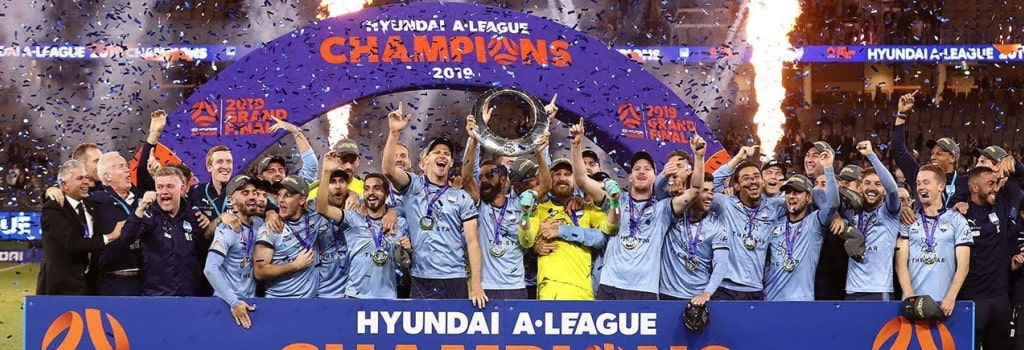

When it comes to Australian sporting heritage, you see a country that does not like to lose.
Be it their record breaking cricket side or their two time World Cup winning rugby side, Australians know how to win titles on the world stage.
So as the soccer culture builds up, we can surely expect Australia to become a soccer powerhouse in the years to come.
And central to that would be the A-League.
When the A-League completes 20 years in 2025, it would already have contributed so much to Australian soccer.
So let us look at the brief but eventful history of the A-League and how it started and is continuing to evolve, gaining a large following from Aussie fans and punters alike at websites like www.bestaucasinosites.com.
Before the creation of the A-League, there were other round-robin competitions. One of them was the National Soccer League.
Once Australia qualified for the 1974 FIFA World Cup, the preparations for the inauguration of the NSL were underway.
In 1977, 14 teams were nominated to participate in the first season of the NSL. As per the rules and regulations of Australian Soccer Federation, the NSL was a formidable football event in the 1980s and 1990s.
However, its demise came when numerous Australian players left for foreign leagues.
Other reasons included lack of sponsors and poor television sponsorships with Channel 7.
The only positive was that there were a few clubs (Sydney, Adelaide and Perth) who became established within this chaotic league.
In 2003, Australian government ordered the Soccer Review Committee to analyze the performance of the NSL.
They came to a conclusion that NSL was under a dark cloud financially and in terms of performance, with numerous national players not interested in it anymore.
Therefore, Football Federation Australia announced that they will come up with a new national league as a replacement for NSL after 27 years.
This was the birth of the Australian A-League as we know it today.
The first season of the Australian A-League was in 2005/06. There were eight teams nominated for the inaugural season of the A-League.
There would be one team from five Australian cities, one from neighbours New Zealand, while the rest of the spots would be filled with either a Sydney team or a Melbourne team.
By June 2005, there were 20 teams suggested to fill the eight spots with 12 groups also sending their bids.
As per the one-city, one-team policy, each club was given a deal of five years in its market. This helped the clubs to form their own identity within the competition.
The first season was won by Sydney after defeating Central Coast.
In the following season, Melbourne Victory secured their first A-League title after beating Adelaide 6-0 in the final. Thompson shined in the match scoring five goals in a single game.
In later seasons, New Zealand Knights were replaced with Wellington Phoenix as they had prioritized foreign talent instead of national-level players and could only win six matches out of a 42, making them a good bet with fans on real money casinos new zealand.
North Queensland Fury joined the competition in 2009. A year later, Melbourne Heart also joined in giving the famous Melbourne derby and the sense of a local rivalry.
Despite the problems both North Queensland Fury and Gold Coast United faced, Western Sydney Wanderers joined the league in 2012.
2012/13 was a major year for the competition as players like Emile Heskey and Alessandro Del Piero graced the competition followed by spells by William Gallas and Alexander Meier.
A year later, Melbourne Heart got renamed as Melbourne City being one of the clubs linked to the Manchester City board.
In 2018, the Australian Federation announced that they would expand the competition to 12 teams. This brought the additions of Western United and Macarthar to the fray.
As the league grows further, more teams will be added, and the existing teams will gain more fans and groom young players for the national side.
As the A-League grows, there is a need for dedicated soccer venues to be made across Australia.
At present most venues are shared among several sports, which makes soccer a second or third priority.
But as soccer grows in Australia, that is sure to change.
All good things have to come to an end, and the same unfortunately has to be said for football stadiums too. This article looks at the grounds which are soon to host their last match, the stadiums whose days are numbered and where fans will be watching their football from next.
The 91 biggest football stadiums in Europe. From Manchester to Munich, Villa Park to Valencia - each one with a capacity over 40,000
My daughter's first ever football match - Orlando City v Atlanta United, August 2019. Written for Izzy to read when she gets old enough. Vamos Orlando
Taking my son to his first football match was one of the best experiences I've had as a father so far. I've written this article for Alex to read when he gets older.
